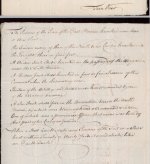Thanks for the kind comments, much appreciated.
Proper fortifications followed certain rules and standards. Either you complied with the rules or you did not, but the rules were well known and established. The real Fort William Henry (FWH) followed those rules, but only to the minimum. FWH was built to the minimum as it regards all aspects of geometry, length, widths, wall thickness, and gun embrasure dimensions. FWH was roughly 300 feet x 300 feet, bastion tip to bastion tip - actually about 350 feet x 280 feet. Any smaller than 300 feet per side is too small as it regards the minimum warehouse and barracks space in relation to the number of men needed to defend the walls. Smaller forts would require numerous outbuildings and storehouses, outside the fort proper to support the garrison. This is a case bigger is nearly always better. Logistics and logistics and more logistics. By the time of the American Civil War, the rifled musket increased the minimum size for a fort to about 375 feet per side.
As to scale issues, some things in the model are "correct", others are not. Things that are close to being "correct" ---- the dimensions of individual gun embrasures on the curtain walls, wall heights, building heights and widths. Only the curtain walls supporting cannon are the full minimum wall width. Actually, the curtain walls with the cannon is one of the few things that is done "correct."
Reducing the wall length to 75% of the minimum generated nearly all the subsequent dimension and scale issues (model is 90 inches from bastion tip to bastion tip; true minimum would have been 120 inches from bastion tip to bastion tip). The length of the model walls (225 feet) represent only 75% of the textbook minimum. The parade ground is subsequently reduced to 56% of the minimum and the individual bastion floor spaces are reduced to 59% of the textbook value. Upper wall thickness of the individual bastions was reduced from 15 feet to 10 feet.
Earlier this year, I learned I could have purchased 8 X 10 foot composite boards at the hardware store (Lowes), instead of the 8 x 8 foot composite boards that I did. This would have made a world of difference as it regards the model without generating that much additional work



.
One thing I will not change is the "green color" which I stole from Carlo ^&grin^&grin^&grin. Carlo, the next month came and went, so maybe next month!!!! Just hope the next month does not become next year.
Ok, now that I dug up the board length fiasco from the past, time for a stiff one.







